Today’s Current Affairs: 19th May 2025 for UPSC IAS exams, State PSC exams, SSC CGL, State SSC, RRB, Railways, Banking Exam & IBPS, etc
Table of Contents
A-to-I mRNA Editing in Animals : Study

Researchers from China recently reported that it’s hard to make sense of the widespread persistence of A-to-I mRNA editing in animals.
- Researchers identified 71 genes in graminearum that contain premature stop codons (UAG) in their unedited mRNA.
- These were termed PSC (premature stop codon-containing) genes.
- Deleting these genes had: No impact during asexual growth.
- But significant disruption during sexual development, proving the essentiality of A-to-I editing in these stages.
- DNA acts like a recipe book for building proteins using 20 amino acids. Each recipe (i.e., gene) is transcribed into messenger RNA (mRNA).
- The mRNA is then read by ribosomes to assemble proteins. The mRNA is composed of four nucleotide bases: A (adenosine), U, G, and C.
- In A-to-I mRNA editing, the adenosine (A) in mRNA is enzymatically converted into inosine (I) by proteins called ADARs (Adenosine Deaminase Acting on RNA).
- The ribosome reads inosine as guanine (G), altering the protein’s amino acid sequence post-transcriptionally, without any change in the DNA.
- A-to-I editing can change the codon identity, thereby producing a different amino acid in the resulting protein.
- This may lead to functional protein diversification and alteration in protein stability or activity.
- A major risk is misreading stop codons: A stop codon like UAG or UGA may be edited to UGG, coding for tryptophan.
- This allows the ribosome to continue protein synthesis, potentially creating abnormally long or malfunctioning proteins.
Polar Satellite Launch Vehicle: C61
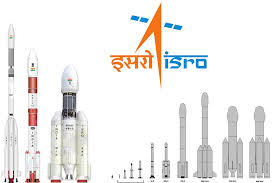
ISRO launched the PSLV-C61 mission from Sriharikota to place the EOS-09 satellite into a Sun-synchronous polar orbit. The mission failed due to a third-stage issue.
- PSLV stands for Polar Satellite Launch Vehicle, a four-stage launch vehicle developed by the Indian Space Research Organisation (ISRO).
- It is primarily designed to place satellites into Sun-synchronous polar orbits (SSPOs), which are ideal for Earth observation missions.
- Each stage of PSLV is powered by a different engine and propellant combination, enabling it to carry medium-weight payloads to a variety of orbits with high precision.
- The PSLV has four stages, with alternate solid and liquid propulsion systems:
- First Stage: Uses HTPB-based solid propellant (Hydroxyl-Terminated Polybutadiene). In the XL configuration, it is supported by six strap-on boosters that enhance the initial thrust. Capable of generating a peak thrust of 4.8 MegaNewtons (MN).
- Second Stage: Powered by the Vikas engine, which uses a liquid fuel combination: Unsymmetrical Dimethylhydrazine (UDMH) as fuel,Nitrogen Tetroxide (N₂O₄) as oxidiser, Generates a thrust of approximately 8 MN.
- Third Stage: Reverts to solid propulsion, again using HTPB-based fuel.
- Fourth Stage: Utilises two liquid engines burning Monomethylhydrazine (MMH) and Mixed Oxides of Nitrogen (MON).
Tornado : Southern United States
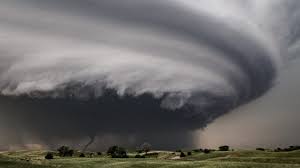
Over 20 people have died in the southern United States due to severe storms and tornado outbreaks affecting Missouri and Kentucky.
- A tornado is a vertical, land-based column of violently rotating air that forms from the base of a thunderstorm to the ground.
- It is characterised by a rapid cyclonic circulation and is often seen as a cloud-filled condensation funnel extending from the sky to the ground.
- In cases of low humidity, the tornado may not form a visible funnel and may appear only as a swirl of dust or debris near the ground.
- When such a rotating column of air forms over a water body, it is known as a waterspout.
- Tornadoes typically exhibit wind speeds ranging from 105 to 322 km/h, but some extreme events can exceed this range.
- They can be stationary or move at high speeds, often advancing at around 97 km/h across the landscape.
- The sheer speed and intensity of the winds make tornadoes one of the most destructive natural phenomena on land.
- Tornado formation is closely linked to interactions between contrasting air masses.
- A collision of warm, moist air (usually from tropical regions) with cool, dry air (typically from polar or upper regions), especially in the presence of a low-pressure system or trough, leads to the formation of thunderstorms and may trigger tornadoes.
- Cyclonic circulations and atmospheric instability further contribute to the rotational dynamics needed for tornado development.
- Tornadoes occur most commonly in mid-latitude regions (between 20° and 60° latitude in both hemispheres) where cold polar air meets warm tropical air, producing frequent thunderstorm activity.
- The United States experiences the highest frequency of tornadoes globally, particularly in the region known as “Tornado Alley”.
- Other countries prone to tornado occurrences include Argentina and Bangladesh, which also lie in the tropical-midlatitude interaction zones.
- The Enhanced Fujita Scale is used to classify the strength of tornadoes based on estimated wind speeds and associated damage levels.
Article 143 : Presidential Reference
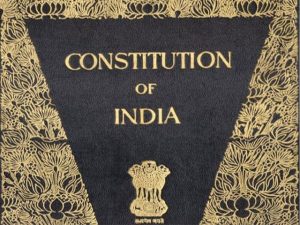
The President of India recently referred 14 questions to the Supreme Court under Article 143.
- A Presidential Reference is a constitutional mechanism under Article 143 of the Indian Constitution, wherein the President of India seeks the advisory opinion of the Supreme Court on important questions of law or fact.
- This power enables the executive to seek judicial clarity on complex constitutional matters without initiating litigation.
- There are two components of Article 143:
- Article 143(1) allows the President to refer any question of law or fact of public importance to the Supreme Court for its advisory opinion.
- Article 143(2) pertains to disputes involving pre-Constitutional treaties and agreements, permitting the President to refer such matters for legal clarification.
- The Supreme Court’s opinion is not binding on the President. It does not carry precedential value but holds strong persuasive authority and is usually followed by the executive and judiciary.
- The provision originates from the Government of India Act, 1935, which empowered the Governor-General to refer legal matters to the Federal Court.
- The President refers to the advice of the Union Council of Ministers. As per Article 145, a minimum 5-judge Bench of the Supreme Court must hear the matter.
- The Supreme Court may choose whether or not to answer the reference. It can refuse to respond if the question is vague, hypothetical, or outside judicial purview.
New Caledonia:
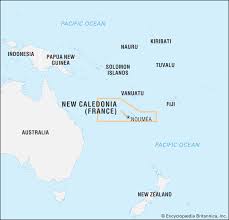
A high-stakes attempt by the French Overseas Minister to broker a new political accord for New Caledonia collapsed recently, plunging the French Pacific territory into profound uncertainty.
- It is a French overseas territory located in the southwestern Pacific Ocean, approximately 1,500 km east of Australia.
- It comprises the main island of Grande Terre (where the capital, Nouméa, is situated), the four Loyalty Islands (Ouvéa, Lifou, Tiga, and Maré), the Belep archipelago, the Isle of Pines, and some remote islands.
- Just over 270,000 people live in New Caledonia (2019 census).
- Approximately 39 percent are indigenous (‘Kanak’). The remainder are Caledonians of European, Polynesian and other (including Vietnamese, Indonesian and Algerian) origins.
- It is one of the European Union’s Overseas Countries and Territories (OCTs), but is not part of the European Union, the Euro or Schengen zones.
- New Caledonia, originally inhabited by the Kanaks, came under French control in 1853.
- New Caledonia for France is situated in the South Pacific, New Caledonia provides France with a military and geopolitical presence in a region with growing global interest, particularly with increasing influence from China.
- The island is rich in natural resources, notably nickel, which is vital for various industries, including manufacturing and technology. It holds about 25% of the world’s nickel reserves.
- New Caledonia’s lagoons, with their diverse reefs and associated ecosystems, were designated a UNESCO World Heritage site in 2008.
Indrayani River:
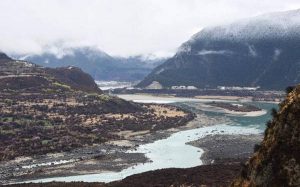
The Pimpri-Chinchwad Municipal Corporation (PCMC) recently demolished 36 illegal bungalows from the River Villa project, located within the blue flood line of the Indrayani River in Chikhali.
- It is a river located in Maharashtra.
- It is a tributary of the Bhima River (a tributary of the Krishna River)
- It is a rain-fed river that originates from the Western Ghats, near the hill station of Lonavala.
- It flows through the Pune district before merging into the Bhima River at Tulapur.
- It is 103.5 kilometres long.
- The river has great religious importance, and the two sacred towns, Alandi and Dehu, are situated on its banks.
- Dehu is known to be a sacred place for being the hometown of the poet Saint Tukaram, who was a popular saint of Maharashtra, and Alandi holds the samadhi of the poet Dnyaneshwar.
- The Indrayani also passes through the industrial town of Pimpri-Chinchwad and plays a role in irrigation and local agriculture.
- Valvan Dam at Kamshet, situated on the Indrayani River, is a hydroelectric generating station.
58th Jnanpith Award:

The President of India conferred the 58th Jnanpith Award on Sanskrit scholar Jagadguru Rambhadracharya Ji at a function held at Vigyan Bhavan in New Delhi recently.
- Jnanpith Award is the highest literary honour of India, given to writers who have excelled in literature in different Indian languages.
- It is given every year to an author for his/her outstanding contribution towards Indian literature through creative writing in any of the Indian languages mentioned in Schedule VIII of the Indian Constitution and English.
- It was instituted in 1961.
- The prize carries a cash award, a citation, and a bronze replica of Vagdevi (Saraswati), the goddess of learning.
- It is sponsored by the cultural organization Bharatiya Jnanpith.
- Bharatiya Jnanpith is one of the premier literary organisations of India, which is nurturing literature and culture through its literary endeavors, which include awards, publication, fellowship, and research, for the last several decades.
- The organisation was established in 1944.
- The first recipient of the award was Malayalam poet G. Sankara Kurup, who received the award in 1965 for his collection of poems Odakkuzhal.
AIM-120C-8 AMRAAM:
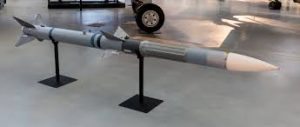
The recent approval by the United States to sell AIM-120C-8 Advanced Medium-Range Air-to-Air Missiles (AMRAAMs) to Turkey has triggered serious concerns in India.
- AIM-120C-8 Advanced Medium Range Air-to-Air Missile (AMRAAM) is a highly advanced beyond-visual-range air-to-air missile (BVRAAM) with surface-to-air missile (SAM) capabilities.
- It was developed by Raytheon Technologies, one of the leading United States defense contractors.
- Developed to engage and destroy enemy aircraft at extended ranges, the AIM-120 has become a cornerstone of modern air combat.
- Designed for deployment from fighter aircraft such as the F-16, F-15, F/A-18, and newer platforms like the F-35, the missile has a range exceeding 160 kilometers under optimal launch conditions.
- Measuring approximately 12 feet in length with a diameter of seven inches, the missile weighs around 356 pounds and is powered by a solid-fuel rocket motor capable of propelling it to speeds exceeding Mach 4, or roughly 3,000 miles per hour.
- The missile’s guidance system is a sophisticated blend of active radar, inertial navigation, and GPS correction, enabling it to operate independently after launch, a feature known as “fire-and-forget.”
- It also incorporates a two-way data link, which allows real-time updates to the missile’s trajectory, enhancing its accuracy against maneuvering targets.
- Its active radar seeker is designed to detect stealthy aircraft with low radar cross-sections, while advanced electronic countermeasures ensure resilience against jamming attempts.
- The missile carries an 18.1-kilogram high-explosive blast fragmentation warhead, optimized for destroying enemy aircraft and drones with a proximity fuse that triggers at the optimal moment.
- It has the ability to engage multiple targets beyond visual range, even in contested electronic environments.
GRAIL Mission : NASA
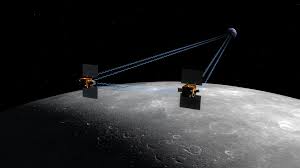
NASA’s GRAIL mission recently unveiled significant differences between the moon’s nearside and farside, attributing them to tidal deformation and varied volcanic activity.
- Gravity Recovery and Interior Laboratory (GRAIL) is a NASA lunar mission launched in 2011.
- It consisted of two robotic spacecraft, Ebb and Flow, which orbited the moon to create the most detailed gravitational map of the lunar surface to date.
- The mission’s primary goal was to measure variations in the moon’s gravitational field, providing critical insights into its internal structure and geological history.
- The GRAIL mission achieved this by precisely measuring the distance between the two spacecraft as they orbited the moon.
- Even tiny changes in this distance, caused by variations in the moon’s gravitational pull, provided data about the moon’s interior composition, crust thickness, and subsurface anomalies.
- This approach has proven crucial for understanding the forces that shaped the moon’s contrasting hemispheres.
- GRAIL discovered that the Moon’s crust was more porous and not as thick as previously supposed.
- It also discovered long linear features called “dikes” that were evidence of the Moon’s expansion by a few kilometres early in its history.
- It unveiled significant differences between the moon’s nearside and farside, attributing them to
- The lunar nearside flexes slightly more than the farside during its elliptical orbit around Earth, a phenomenon known as tidal deformation.
- This difference in flexibility is primarily driven by Earth’s gravitational pull, which exerts a greater influence on the side facing our planet.
- The moon’s nearside was once more volcanically active than the farside with vast plains of basaltic rock known as “mare.”
- This volcanic activity concentrated heat-producing, radioactive elements like thorium and titanium in the nearside mantle, resulting in a significant temperature difference between the two hemispheres, creating a long-term thermal imbalance that has shaped the moon’s geology over billions of years.
- The nearside crust is significantly thinner than the farside crust, allowing magma from the moon’s interior to more easily reach the surface in the past, leading to extensive lava flows.
Mixed Green Manure:
The National Seeds Corporation (NSC) has introduced two mixed green manure kits to promote eco-friendly soil enrichment practices, enhancing sustainability in Indian agriculture.Mixed green manure involves cultivating multiple plant species together specifically to be ploughed back into the soil to enhance fertility and structure.Unlike single-species green manures, this method offers complementary benefits through synergistic crop interactions.
Operation Gideon Chariots:
Israel launched Operation Gideon Chariots in Gaza to pressure Hamas into releasing hostages. The operation follows failed negotiations and intensified strikes amidst global humanitarian concerns.A large-scale military offensive launched by the Israel Defense Forces (IDF) in Gaza Strip.It marks a renewed escalation in the conflict, especially after the breakdown of ceasefire negotiations in Doha.Primary aim is to Secure the release of remaining Israeli hostages held by Hamas, Secondary aim is to Intensify military pressure to neutralize Hamas’s operational capability.
Revamped Gyan Bharatam Mission:
Prime Minister Narendra Modi will launch the revamped Gyan Bharatam Mission (formerly National Manuscripts Mission) on June 9, 2025.A revamped national initiative for identifying, conserving, digitising, and sharing India’s vast manuscript wealth.
Announced in: Union Budget 2025–26, under the Ministry of Culture. Ministry Involved: Ministry of Culture; anchored by Indira Gandhi National Centre for the Arts (IGNCA). Objective: To survey, catalogue, preserve, and provide access to over one crore manuscripts from academic institutions, museums, libraries, and private collectors.
Bird-Wing Eruption:
A massive solar flare event, named the “bird-wing” eruption, was observed on the Sun’s northern hemisphere and is expected to impact Earth.A visually dramatic solar eruption with plasma shaped like wings, observed by NASA satellites. The ejected plasma stream spanned over 1 million km, twice the Earth-Moon distance. It Involved both a solar flare and a coronal mass ejection (CME). Plasma ejection occurred on the Sun’s northern hemisphere. Radiation already caused radio blackouts across parts of Asia, Africa, Europe, and the Americas.




